Why Was Ayllu Very Important For The Inca People?
A. Sutherland - AncientPages.com - The "ayllu" was the traditional form of a community in the Inca society, especially among Quechuas and Aymaras, the indigenous people of South America.
Everyone in the Inca Empire was part of an ayllu.
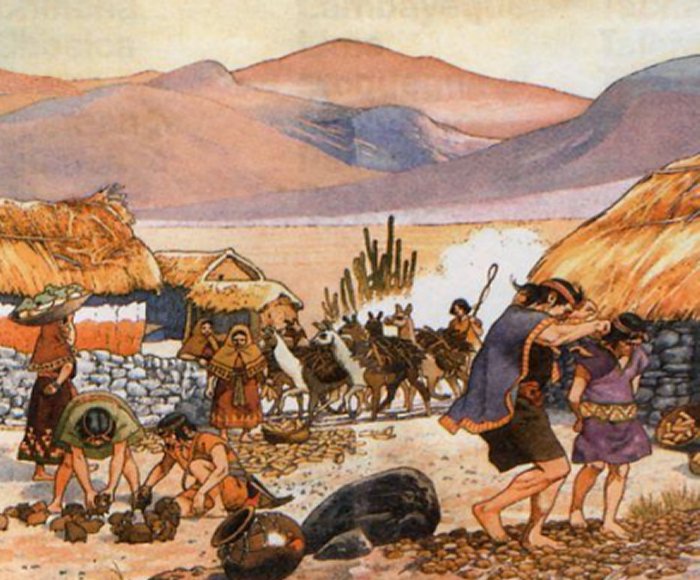 Inca community of Ayllu. source
Inca community of Ayllu. source
This form of organized society was particularly significant in Peru and Bolivia. The ayllu tradition existed and functioned well before the Inca conquest and continues to exist today in Andean communities.
The ayllu ("enlarged community") was formed of a number of families related to one ancestor they had in common. Extended family groups could adopt non-related members who had to assume the full responsibility of membership. The ayllu members had mutual obligations to each other and were aware of their duties towards society and the nature surrounding them.
They owned a piece of land and worked together, farming it collectively. They were self-sufficient, cultivated much of their food, or traded for all the food they consumed.
They educated their children to continue this tradition.
The Inca people had to work together to build houses, care for large herds of animals, plant and plow fields, and maintain irrigation systems.
Inca Farmers, 1583. Incan farmers planting corn with the aid of an Andean foot plow. The first chronicle and good government (1583-1615) by Felipe Guaman Poma de Ayala. Source:
Their duty was also to work for the government and serve in the army; in the meantime, other ayllu members would come and perform the necessary work in the field.
Ayllus – Skilled Craftsmen
Not all ayllus worked in agriculture. Many others would specialize in manufacturing pottery, jewelry, or clothing.
Necessary skills were transferred from generation to generation within the same ayllu. Ayllus produced virtually anything essential for everyday living, which the state would distribute to other ayllus.
The abundance and diversity of resources and their availability during bad crops and war made the population loyal to the Sapa Inca and the local government.
Kurakas, 'Huaca' Tradition And Marriage
Kurakas (also known as 'Karakas') were leaders at the head of the ayllu community.
As Rebecca M. Seaman writes in "Conflict in the Early Americas," they were "… responsible for organizing the varying ayllus for the purpose of land distribution, farming, public works, and other communal purposes. In this manner, family kinship groups [ayllus] labored, celebrated, worshiped, and paid tribute together as a unit.
However, it was the combined contributions of the varying ayllus that helped sustain the greater community…"
Karakas also provided chicha corn beer and food for all during religious celebrations. Reciprocity was expected from all of the leaders as a reward for the Ayllu's hard work. The payment for this work was usually in the form of the same service or could be the exchange of a product of some kind, a textile, or sometimes even food.
The ayllus members had their own huaca (or wak'a), or minor deity, usually embodied in a physical object such as a rock or mountain. As to the ayllus marriage traditions, they were required to marry someone from their own ayllu.
Like all self-sustaining communities, the Ayllu also had specific problems they could only solve with a helping hand. In the case of natural disasters, for example, farmers within the Ayllu community could not feed their families. In that case, they had to rely on the Inca storehouse system.
Written by – A. Sutherland - AncientPages.com Senior Staff Writer
Updated on January 24, 2024
Copyright © AncientPages.com All rights reserved. This material may not be published, broadcast, rewritten or redistributed in whole or part without the express written permission of AncientPages.com
Expand for referencesMore From Ancient Pages
-
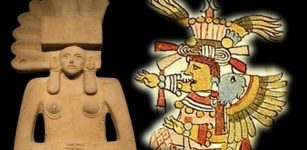 What Was An Aztec Confession?
Ancient History Facts | Jul 25, 2017
What Was An Aztec Confession?
Ancient History Facts | Jul 25, 2017 -
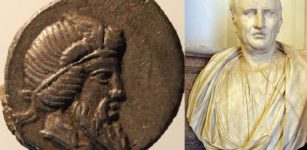 Scientists Solve The Mystery Of Cicero’s Puzzling Words By Analyzing Ancient Roman Coins – Evidence Of Financial Crisis?
Artifacts | Apr 6, 2022
Scientists Solve The Mystery Of Cicero’s Puzzling Words By Analyzing Ancient Roman Coins – Evidence Of Financial Crisis?
Artifacts | Apr 6, 2022 -
 Sinister Mythical Dark Elves And Light Elves And Their Magical Ship ‘Skidbladnir’
Featured Stories | Oct 3, 2016
Sinister Mythical Dark Elves And Light Elves And Their Magical Ship ‘Skidbladnir’
Featured Stories | Oct 3, 2016 -
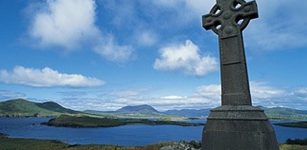 Manx: Ancient Dead Gaelic Language That Refused To Die And Has Been Revived Again
Ancient History Facts | Oct 7, 2016
Manx: Ancient Dead Gaelic Language That Refused To Die And Has Been Revived Again
Ancient History Facts | Oct 7, 2016 -
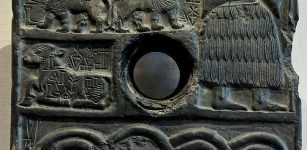 Babylonian Story Of Bird-God Anzu ‘The Wise One’ And His Underworld Realm
Featured Stories | Dec 10, 2016
Babylonian Story Of Bird-God Anzu ‘The Wise One’ And His Underworld Realm
Featured Stories | Dec 10, 2016 -
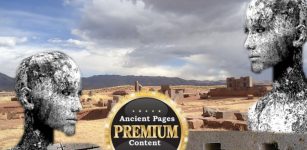 Ignored Archaeological Discovery At Puma Punku That Could Re-Write Ancient History
Featured Stories | May 11, 2020
Ignored Archaeological Discovery At Puma Punku That Could Re-Write Ancient History
Featured Stories | May 11, 2020 -
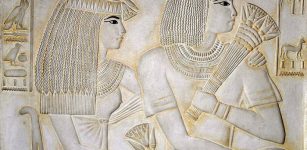 Mystery Of Merit Ptah And The Unknown Identity Of Peseshet Who History Forgot
Archaeology | Jan 8, 2020
Mystery Of Merit Ptah And The Unknown Identity Of Peseshet Who History Forgot
Archaeology | Jan 8, 2020 -
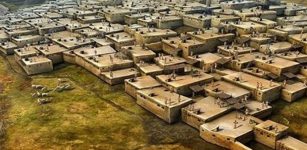 8000-Year-Old Prehistoric Çatalhöyük: Residents Were Buried In Their Homes
Archaeology | May 1, 2020
8000-Year-Old Prehistoric Çatalhöyük: Residents Were Buried In Their Homes
Archaeology | May 1, 2020 -
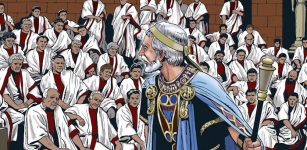 Roman Consuls Seized Power Through Intimidation, Bribery And Show Business
Ancient History Facts | Feb 24, 2021
Roman Consuls Seized Power Through Intimidation, Bribery And Show Business
Ancient History Facts | Feb 24, 2021 -
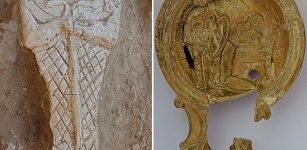 Hellenistic Decorated Tombs And Tombstone Probably Used As A False Door Unearthed In Egypt
Archaeology | Jan 10, 2018
Hellenistic Decorated Tombs And Tombstone Probably Used As A False Door Unearthed In Egypt
Archaeology | Jan 10, 2018 -
 Seven Times People Discovered The Americas And How They Got There
Featured Stories | Sep 9, 2022
Seven Times People Discovered The Americas And How They Got There
Featured Stories | Sep 9, 2022 -
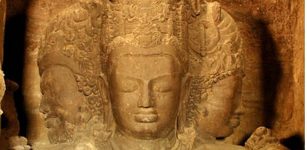 Ancient Complex Of Elephanta Caves In India
Featured Stories | Dec 27, 2016
Ancient Complex Of Elephanta Caves In India
Featured Stories | Dec 27, 2016 -
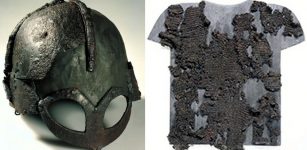 Unique Gjermundbu Helmet – Why Has Only One Viking Age Helmet Been Found In Scandinavia?
Artifacts | Mar 23, 2018
Unique Gjermundbu Helmet – Why Has Only One Viking Age Helmet Been Found In Scandinavia?
Artifacts | Mar 23, 2018 -
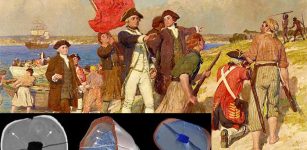 Unique Study Of Skeletal Remains Reveals Grave Health Of Australian Pioneer Settlers
Archaeology | Apr 7, 2022
Unique Study Of Skeletal Remains Reveals Grave Health Of Australian Pioneer Settlers
Archaeology | Apr 7, 2022 -
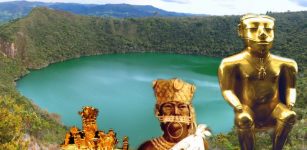 Golden Secrets Of Lake Guatavita And The Muisca People Gave Rise To The El Dorado Myth
Featured Stories | Nov 12, 2019
Golden Secrets Of Lake Guatavita And The Muisca People Gave Rise To The El Dorado Myth
Featured Stories | Nov 12, 2019 -
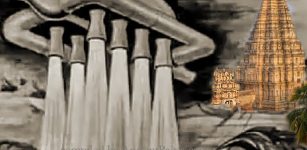 Vimanas Of The Rama Empire: Flying Machines Dominated Ancient Skies In Distant Past
Ancient Technology | Jul 23, 2017
Vimanas Of The Rama Empire: Flying Machines Dominated Ancient Skies In Distant Past
Ancient Technology | Jul 23, 2017 -
 Ruins Of Ancient Jerusalem Shed New Light On Earth’s Magnetic Field’s Behavior
Ancient Symbols | Aug 11, 2020
Ruins Of Ancient Jerusalem Shed New Light On Earth’s Magnetic Field’s Behavior
Ancient Symbols | Aug 11, 2020 -
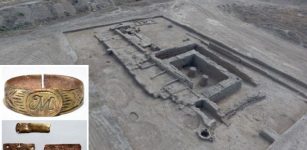 Stunning Ancient Khanqah With Large Underground Crypt, Ritual Halls And Burials Discovered In Turkestan
Archaeology | Aug 14, 2020
Stunning Ancient Khanqah With Large Underground Crypt, Ritual Halls And Burials Discovered In Turkestan
Archaeology | Aug 14, 2020 -
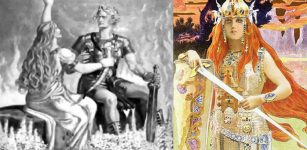 Valkyries Sigrdriva And Brynhildr: Brave Warriors Who Were Punished By God Odin In Norse And Germanic Mythology
Featured Stories | Apr 4, 2017
Valkyries Sigrdriva And Brynhildr: Brave Warriors Who Were Punished By God Odin In Norse And Germanic Mythology
Featured Stories | Apr 4, 2017 -
 10 Remarkable Jain Temples – Marvelous Ancient Architecture And Stone Carvings
Featured Stories | Dec 17, 2015
10 Remarkable Jain Temples – Marvelous Ancient Architecture And Stone Carvings
Featured Stories | Dec 17, 2015

